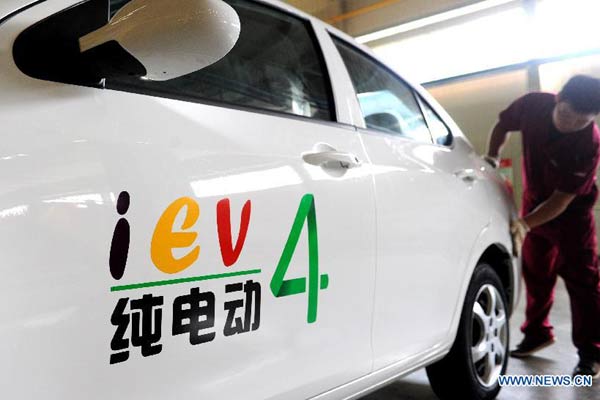 |
|
A new electric car is on show in Beijing.[Provided to China Daily] |
We are at a crucial juncture in the history of our planet. The global agreement at the UN climate change conference in Paris in December is an unprecedented commitment to pre-empt a catastrophic rise in global temperatures. Now is the time to change fundamentally the way we use the world's resources-or face the consequences.
The crucial next step is a review mechanism, agreed at the Paris climate conference, to revise national targets over time.
Clever use of energy will unlock a host of economic and social-not to mention environmental-benefits. Best of all, solutions to this great energy challenge already exist.
Lighting is one of the easiest places to start.
Lighting accounts for a staggering 19 percent of global electricity consumption, yet we still cling to outdated and inefficient alternatives. LED lighting consumes at least 40 percent less energy than conventional lighting-and that's just the beginning.
Intelligent LEDs, embedded with sensors and connected wirelessly, can be managed remotely via the Internet. Their potential in tackling climate change is immense: connected lighting can deliver savings of up to 80 percent as households, businesses and entire cities reduce their environmental impact.
Our most recent estimate is that a universal switch to LED could slash lighting's share of electricity consumption to just 7 percent, a saving of €272 billion and a reduction in global carbon dioxide emissions of about 1,400 megatons by 2030.
Two years ago, Los Angeles began installing 140,000 LED street lights. Last year, the city reported energy savings of 63 percent and cost savings of nearly $9 million. Now consider this: of about 300 million streetlights across the world, only about 10 percent are LEDs. And just 1 percent are connected. Failure to bring this technology to scale would be a missed opportunity.
Energy efficiency does not entail sacrifice-quite the opposite. It can help mitigate climate change, while bringing huge economic and social benefits. Simply doubling our progress in energy efficiency-from the current rate of 1.3 percent to, say, 3 percent per year-would create 6 million new jobs within five years. At the same time, by 2030, that would cut the world's energy bill by more than $2 trillion.
Cleaner, energy-efficient light is also an urgent humanitarian need. About one in seven people are trapped in light poverty. That is 1.1 billion people-they are cut off from the grid with no access to electric light in their houses. Many resort to kerosene lamps and candles, pollutants which claim 1.5 million lives every year through respiratory illnesses and fires.
Off-grid solar LED can end this injustice, at a fraction of the cost of kerosene or grid lighting. Bringing these communities out of darkness would trigger a huge stimulus for development, with positive effects for global growth. These countries have an opportunity to start from scratch with greener, money-saving lighting while the rest of the world still has to play catch-up.
The need is to team up to safeguard the future of our planet.
Making a real difference requires a potent combination of political will, entrepreneurial drive and new financial models. To limit global warming will take a revolution, one that will safeguard the future of our planet by unlocking massive benefits for the economy, for businesses, and for society. Acting together, we can achieve both the detailed targets and the greater vision agreed at the UN climate conference in Paris.
The author is chief executive officer of Philips Lighting.

I’ve lived in China for quite a considerable time including my graduate school years, travelled and worked in a few cities and still choose my destination taking into consideration the density of smog or PM2.5 particulate matter in the region.